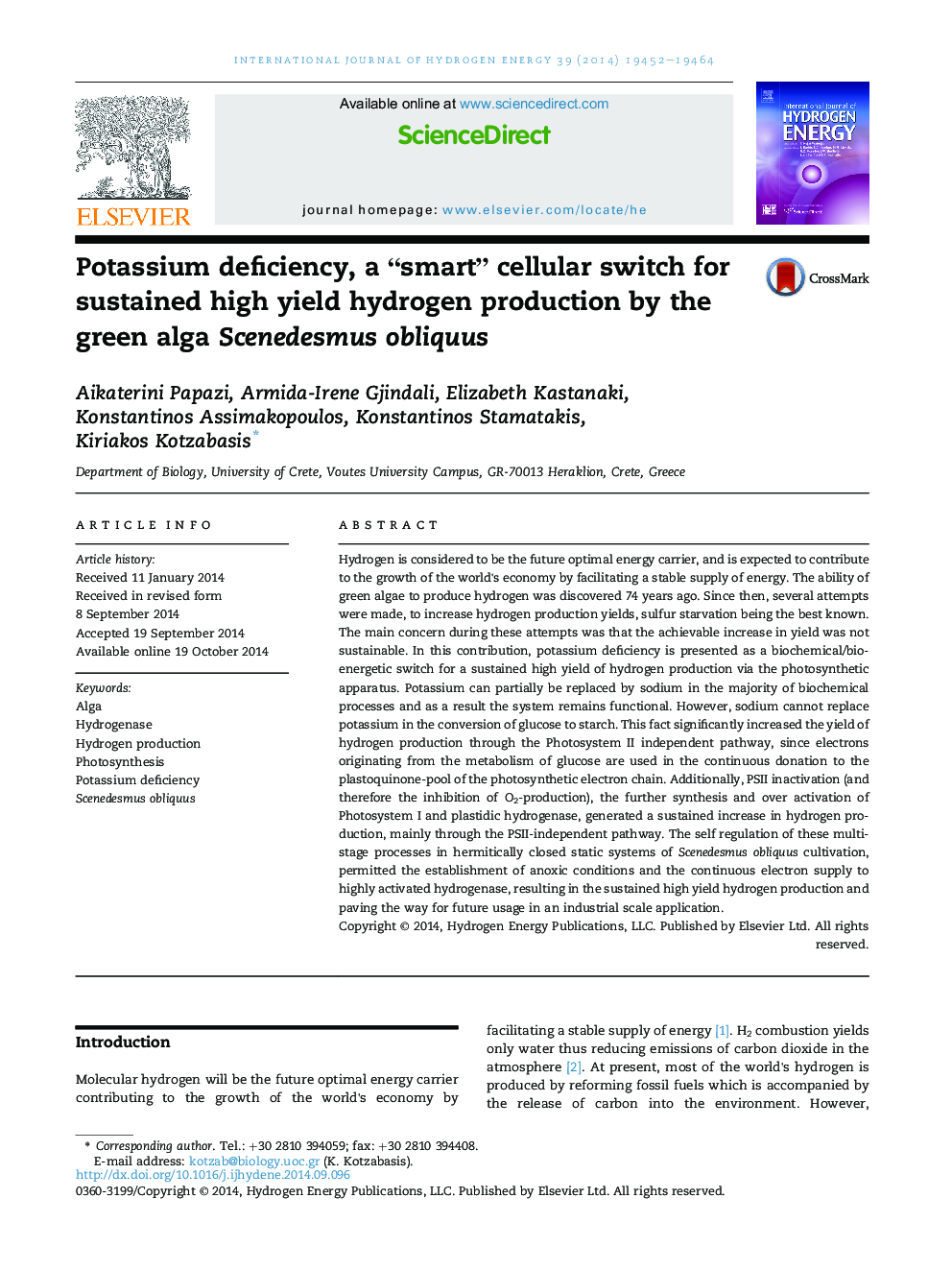| کد مقاله | کد نشریه | سال انتشار | مقاله انگلیسی | نسخه تمام متن |
|---|---|---|---|---|
| 1280697 | 1497475 | 2014 | 13 صفحه PDF | دانلود رایگان |

• Potassium deficiency in green algae leads to high yield of H2 production.
• Potassium deficiency is a “smart” cellular switch that leads to sustained high yield H2 production.
• K-deficiency increases the yield of H2 production through the PSII-independent pathway.
Hydrogen is considered to be the future optimal energy carrier, and is expected to contribute to the growth of the world's economy by facilitating a stable supply of energy. The ability of green algae to produce hydrogen was discovered 74 years ago. Since then, several attempts were made, to increase hydrogen production yields, sulfur starvation being the best known. The main concern during these attempts was that the achievable increase in yield was not sustainable. In this contribution, potassium deficiency is presented as a biochemical/bioenergetic switch for a sustained high yield of hydrogen production via the photosynthetic apparatus. Potassium can partially be replaced by sodium in the majority of biochemical processes and as a result the system remains functional. However, sodium cannot replace potassium in the conversion of glucose to starch. This fact significantly increased the yield of hydrogen production through the Photosystem II independent pathway, since electrons originating from the metabolism of glucose are used in the continuous donation to the plastoquinone-pool of the photosynthetic electron chain. Additionally, PSII inactivation (and therefore the inhibition of O2-production), the further synthesis and over activation of Photosystem I and plastidic hydrogenase, generated a sustained increase in hydrogen production, mainly through the PSII-independent pathway. The self regulation of these multistage processes in hermitically closed static systems of Scenedesmus obliquus cultivation, permitted the establishment of anoxic conditions and the continuous electron supply to highly activated hydrogenase, resulting in the sustained high yield hydrogen production and paving the way for future usage in an industrial scale application.
Figure optionsDownload as PowerPoint slide
Journal: International Journal of Hydrogen Energy - Volume 39, Issue 34, 20 November 2014, Pages 19452–19464